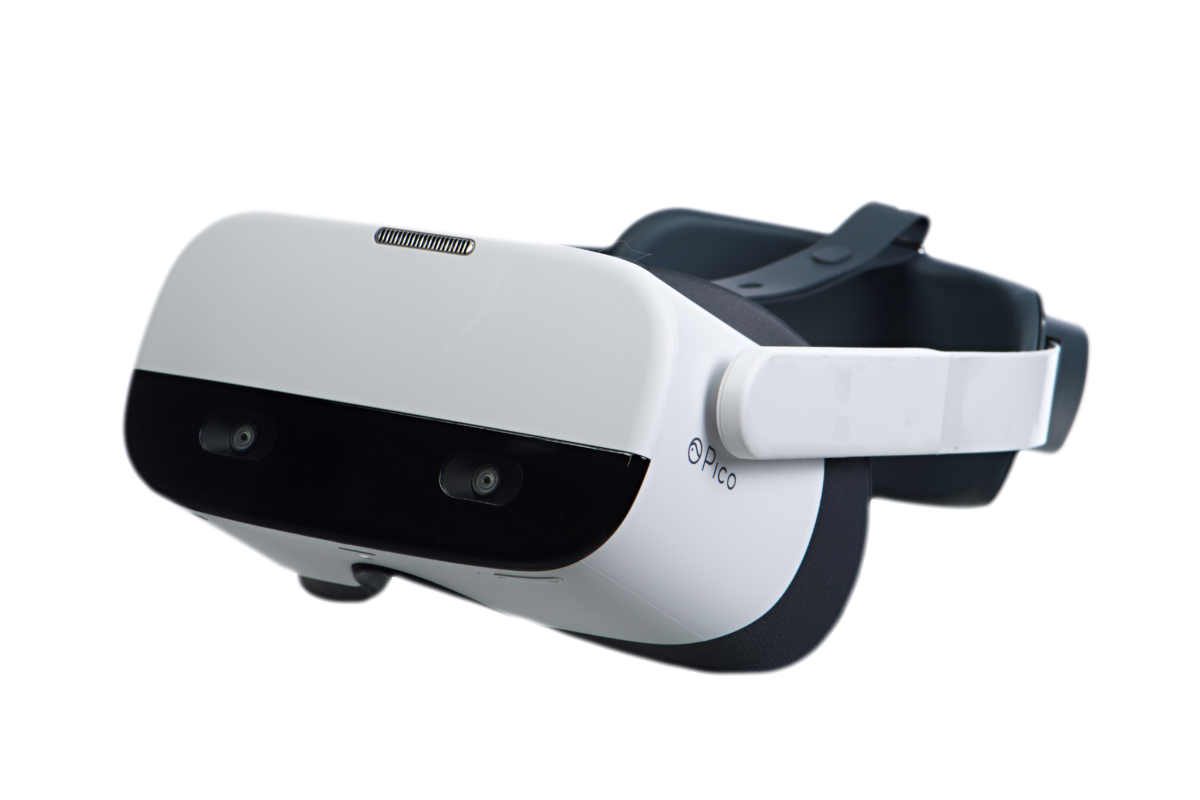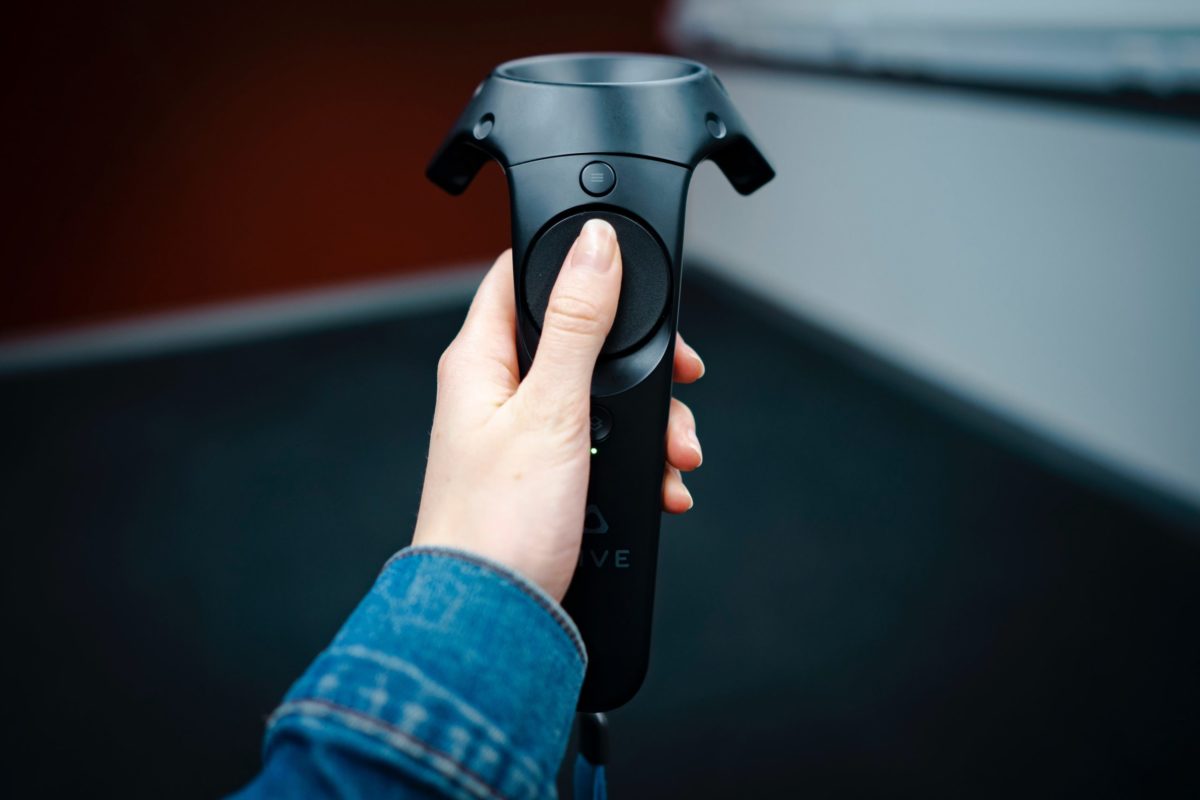If you’ve never tried it, you might mistakenly think that virtual reality is still science fiction or a gaming gimmick. Nothing could be further from reality (pun fully intended).
In fact, according to Gartner, one of the most trusted technology advisory services for executives, virtual reality is distancing itself from the emerging tech hype cycle and swiftly moving into mainstream adoption.

Using Gartner’s Hype Cycle model, virtual reality has moved onto the “Slope of Enlightenment.” For the technologies that even make it this far, this is the phase when enterprises begin to make serious investments and pilot their first mainstream implementations.
Proof of this increased adoption of enterprise virtual reality solutions is present in your daily news feed. Here are just a few of the most recent announcements of how virtual reality is becoming a mainstream training methodology.
- Walmart prepares associates for Black Friday mayhem
- Volkswagen will train 10,000 employees this year
- And many more: KFC, UPS, LA Sheriff’s Dept, DOD, and NASA
All that is to say, if you’re thinking about getting VR into your training program, you’re in good company, and your business case should be relatively easy to assemble.
15 Benefits of Using Virtual Reality for Training
Now, let’s dive into some of the specific benefits of using VR training.
1. Create a More Engaging Learning Experience
Virtual reality training forces trainees to get out of their seats and practice the learning objective. As the name implies, you’re getting as close to real-life training as possible. VR gives you the ability to go beyond telling students what they’ll experience in the field and showing them instead; placing them in those actual scenarios and experiences — without the risk.
2. Do the Impossible
There are a lot of real-world scenarios that you can’t encounter, simulate, or sometimes even explain in the real world without unacceptable levels of risk or cost. Virtual reality busts through these limitations. You can literally design and produce the impossible and then transport your students right into the middle of it.
3. More Practical Hands-on Approach
Traditional training, at best, shows pictures and videos of the “right way” to do things. Layered on top of that you might drill some lists and ingenious mnemonic devices to help trainees remember the steps when they have to perform the task or procedure in the field. Good luck getting it right the first few times in the field, am I right?
Virtual reality training gives you the ability to give your trainees practical hands-on exercises the first time and as many times as it takes for each to get it perfect before they ever do it in the real world.
4. Make Serious Mistakes — and Walk Away From Them
It’s somewhat ironic: safety and costs often prevent us from allowing students to make (and learn from) their worst mistakes, yet experiencing the consequences of those mistakes — getting complacent, being sloppy, or just momentarily slipping up — provides us with some of our best learning opportunities.
Virtual reality gives you the ability to let trainees make all their mistakes, even the potentially fatal ones, in the safety of a simulated world and respawn to try again.
5. Encourage Exploration and Trial & Error
Like making mistakes, learning by trial & error is one of the best ways to retain new skills. Techniques and tricks that we learn by tinkering and then adapt to fit our particular work style are invaluable. (Think of someone having the so-called “touch” for doing a specific job or task.)
Virtual reality training gives instructors and students the flexibility to discover the best ways to make decisions, troubleshoot and solve problems, or simply do their jobs a little bit better. Remember: little improvements in productivity can pay big dividends over time.
6. Boost Learning Retention
Sitting through the class, passing the test, and getting the certificate is of no value if you can’t recall your training when you face the situation in the field! Knowledge retention is critical, especially for specialized training that focuses on protocols that will only be encountered occasionally (if ever) in real life but which have to be performed more or less perfectly when they are. When an employee is called upon to perform HAZWOPER, or handle another serious emergency, things have to be done right or lives can be lost.
Hands-on experience has proven to be the best way to retain new skills. Virtual reality, in contrast to classroom training, gives you the opportunity to provide this realistic on-the-job training experience.
This isn’t an assumption. When put to the scientific test, virtual reality training is proven to deliver higher retention rates.
7. Appropriately Pace Learning
The flexibility and affordability of a simulated (virtual reality) work environment gives your students the ability to work through learning objectives at their own pace. They can try and try again until they feel completely confident with each new skill or show off their depth of knowledge with scenario randomizations that ensure no two training experiences are the same. VR training provides a much more nimble way to train.
8. Improve Employee Performance
Because virtual reality simulates the real-world, students get hands-on and the opportunity for nearly unlimited practice repetitions, allowing for a process that steadily improves employee performance. Unlike traditional classroom or even video training, VR training ensures that when employees encounter training scenarios in the field, they will have practiced that skill or protocol over and over, to perfection, with any number of situational variables at play. As legendary NFL coach Vince Lombardi once said, “Practice doesn’t make perfect — perfect practice makes perfect.”
9. Reduce Training Cost
When you need high-risk or high-performance training, you’re usually talking big budgets. Training a construction worker, healthcare professional, or soldier with comprehensive and realistic training is expensive — and the real-world costs of improper training in any of those professions is ever higher, and can include people’s very lives.
Getting quality training for complex and challenging jobs often means traveling and paying for special training facilities and experiences. And despite the cost, it’s still not likely to be customized to your specific requirements.
With virtual reality, you can deliver customized, realistic training experiences in software, for a fraction of the cost. Then you can provide that virtual experience or even have trainees train together anywhere in the world without anyone needing to travel.
10. Speed to Train
VR training isn’t limited by facilities, location, or even instructor availability, in many cases. This advantage enables you to get every employee trained and ready to perform in the field as fast as they achieve competency in the virtual world — in fact, possibly faster.
11. Built-in Measurement and Grading
One of the cool things about developing training in software is that your metrics and grading systems can be coded right into the software.
VR training software can observe and capture responses and behaviors during the virtual training exercise. This unique feature of VR training frees instructors to provide more subjective feedback and students won’t even feel like they are being tested.
12. Collaborative Learning
The increased connectivity provided by the Internet and software is making it easier and easier to collaborate. Your teams probably already work together across the nation and maybe even the world in other aspects of your business.
Why wouldn’t you extend this to your training?
Virtual reality, lets you get all of your trainees in the same room, working together, even if they’re located at opposite ends of the world.
13. Implemented Remotely
Maybe it’s not just your trainees that are spread all over the world; maybe your training department is stuck in some remote headquarters building.
No problem.
VR training can allow you to deploy the very best and most current training experiences into remote job sites and offices, from wherever your training team might be.
14. Combined Learning Styles
Virtual reality, because it is a reflection of the real world, can allow you to present trainees a variety of training approached. Even though it is a computer simulation, you can introduce textual, auditory, and visual learning queues into your VR training – satisfying a variety of learning styles.
15. Safety
Probably one of the most compelling benefits of virtual reality is safety. There are so many training scenarios that require trainees to learn how to safely perform hazardous tasks or make (the right) life and death decisions on their first day on the job.
VR training is the only way to provide this kind of critical training.
Ready to Try VR Training?
There’s little question that virtual reality technology is ready for serious use in corporate training. In many cases, VR training has become the best and maybe the only way to accomplish many learning objectives. How will you pilot your first VR training experience? PIXO VR can help.
Custom Virtual Reality Training Solution
Looking for something specific?
Let’s talk about custom VR Training options for your business. Working with our award-winning team of 3D artists, designers, and engineers, we can use our state-of-the-art platform to build a custom Virtual Reality Training experience for any business.

PIXO Has Improved VR Management to One Easy Step

Further Reading
- Research Backs the Benefits of VR Training, Association for Talent Development
- 5 Benefits Of Using Augmented And Virtual Reality Technologies In eLearning, eLearning Industry

Leave a Reply
You must be logged in to post a comment.